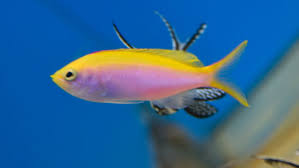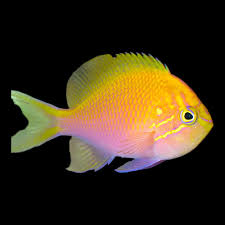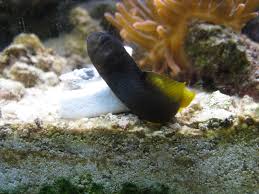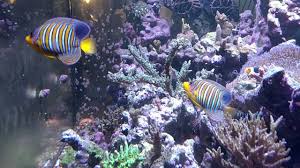The Image of the Dragon in Legends of Magical Ships: Myth and Symbolism

The mythical dragon has always been a prominent figure in the folklore of various cultures, especially those with strong maritime traditions. Often associated with water, rivers, seas, and oceans, the dragon is more than just a symbol of strength and mystery. It is frequently intertwined with legends surrounding magical ships, which played a central role in trade, exploration, and the mythological journeys of heroes. These dragons and their connection to supernatural vessels have become a rich and enduring part of world mythology, transcending the boundaries of time and geography. In this article, we delve into the imagery of the dragon in legends about magical ships, exploring its symbolic meaning, its role in the stories of great voyages, and its influence on the cultural understanding of maritime journeys.
The Dragon as a Symbol of Power and Protection
One of the most prominent themes in stories about magical ships is the idea that the ship is not only a vessel for travel but also a symbol of divine protection, guidance, and fortune. The dragon, as a powerful and supernatural being, often serves as a guardian of these vessels, ensuring their safety during perilous sea journeys. Dragons are commonly depicted in mythology as creatures that control water, weather, and other natural elements. This connection to nature and the elemental forces makes dragons a fitting symbol for those undertaking grand voyages, especially in cultures where the sea was both a source of sustenance and danger.
In many cultures, the presence of a dragon on a magical ship represents the protection of the gods or supernatural forces. The dragon’s ability to control the sea and the weather allows it to safeguard the ship and its crew from the harsh realities of sea travel—whether it’s storms, dangerous creatures, or other treacherous obstacles. The ship, therefore, becomes more than just a mode of transport; it transforms into a sacred vessel imbued with the divine power of the dragon.
Dragons and Their Magical Ships in Chinese Mythology
In Chinese mythology, dragons are central figures of power, wisdom, and control over the forces of nature. They are often linked with water, rain, and the ocean, making them natural symbols of seafaring and navigation. In several Chinese legends, dragons are not just mythological creatures but are also guardians of magical ships that carry heroes or important figures on journeys of great significance.
One of the most famous examples of a magical ship with a dragon connection is found in the story of Xuánwǔ, a powerful god who traveled across the seas on a vessel protected by a dragon. According to the myth, the ship was imbued with the power of the dragon, which provided the necessary protection for the god’s voyage and ensured his success in overcoming any adversities he encountered. The ship, known for its unassailable ability to cross turbulent waters, symbolizes the seamless harmony between the mystical power of the dragon and the might of human will. The dragon’s protection is also seen as a manifestation of cosmic balance, guiding the hero to achieve his goals.
Furthermore, dragons in Chinese mythology are often associated with sea gods and goddesses who govern the ocean’s tides and waves. These mythological figures are frequently depicted riding on ships that are powered by the dragons themselves. The dragon, in this sense, is both a protector and a guide, ensuring safe passage through stormy seas and safeguarding the ship from all threats. The imagery of a dragon accompanying travelers on magical ships has thus remained a significant motif in Chinese art, literature, and folklore.
Dragons in Greek and Mediterranean Mythology
In Greek and Mediterranean mythology, dragons also play a vital role in stories of magical ships and great voyages. One of the most notable examples is the myth of Jason and the Argonauts, in which Jason and his crew set sail on the Argo, a ship with divine origins. While the ship itself is not directly a dragon, many versions of the myth feature dragon-like creatures as guardians of the treasures that the Argonauts seek, such as the Golden Fleece.
In some versions of the myth, a dragon is placed as a guardian at the end of the journey, preventing any mortal from obtaining the Golden Fleece without first defeating the creature. The dragon’s role in these stories is not merely to threaten but to serve as a challenge that the hero must overcome, symbolizing the idea that great voyages and heroic quests are never without their perils. The dragon is a representation of both the challenges of the journey and the reward for overcoming such obstacles.
Moreover, the myth of Perseus and the Gorgon features a dragon-like creature, which helps Perseus achieve his ultimate goal. Perseus, with the help of the gods, sails across seas to defeat the creature and rescue the princess Andromeda. In these legends, the magical ships are frequently powered by divine intervention, with the ships themselves often taking on an ethereal or magical quality. The dragons, in turn, act as intermediaries between the human world and the supernatural, guiding and guarding the heroes as they journey across the seas.
The Viking Dragon Ships
One of the most famous cultural representations of dragons on ships comes from Viking lore, particularly the Drakkar, the dragon-headed longships that were used by Norse warriors during the Viking Age. These ships were not magical in the literal sense, but they were imbued with immense cultural and symbolic significance. The ships were designed with dragon heads carved at the prow, a feature that was believed to ward off evil spirits and protect the ship and its crew during their voyages.
The Viking Drakkar ships were designed for speed and agility, allowing Viking explorers, traders, and raiders to travel long distances across seas and rivers. The dragon figurehead, however, was more than just a decorative element—it represented the Viking belief in dragons as powerful protectors and symbols of strength. The dragon was thought to bestow courage and protection on those who sailed under its gaze, ensuring that the warriors would return victorious or that their journeys would be prosperous.
In Viking sagas, dragons often appear as formidable creatures that protect treasures or sacred places. These creatures could be tied to magical ships in the sense that they embodied the forces of nature that could either help or hinder the progress of a voyage. The Viking dragon ships were believed to be invincible, with the dragon serving as a supernatural guardian of the ship, protecting it from storms, sea monsters, and other challenges.
Dragons and Magical Ships in Japanese Folklore
In Japanese folklore, dragons are also associated with water, rivers, and the sea. Similar to the Chinese and Southeast Asian traditions, Japanese dragons are often depicted as protectors of the waterways, ensuring that seafarers and travelers have safe passage. However, in some stories, these dragons also play a direct role in guiding magical ships across the seas.
For example, in the myth of Tamayori-hime, a goddess who journeys across the seas to marry a mortal man, a magical ship is guided by a dragon to ensure its safe journey. The dragon is not only a guardian but also a symbol of divine power and protection, ensuring that the goddess reaches her destination safely. The ship, imbued with the dragon’s power, becomes a vessel of both literal and spiritual transportation, linking the human world to the divine and the earthly to the celestial.
Additionally, dragons are often associated with the Ryūjin, the dragon king of the seas, who is said to control the tides and waves. In some legends, Ryūjin’s domain is represented by ships that are either magically enhanced or guided by his power, symbolizing the connection between the dragon and the success of maritime voyages.
The Dragon and Its Symbolism in Magical Ships
The imagery of dragons in legends about magical ships highlights the multifaceted role that these creatures play in human understanding of the sea, nature, and travel. The dragon’s ability to control water, weather, and natural forces made it an ideal symbol for the guardianship of magical vessels, ensuring that those on board would be protected during their journeys.
The dragon’s presence on these ships is a reflection of the belief that the sea is not only a physical entity but also a spiritual and mystical realm that requires divine protection. In many cultures, the dragon represents the unseen forces of nature that govern the seas, making it a fitting companion for heroes and travelers embarking on great voyages. The ship, imbued with the power of the dragon, becomes more than just a tool for travel—it becomes a sacred vehicle of divine intervention, guiding its passengers toward success, safety, and discovery.
Conclusion: The Enduring Legacy of Dragons in Maritime Legends
The image of the dragon in stories about magical ships is a powerful and enduring symbol of the relationship between humanity and the forces of nature. Dragons, as guardians of the seas and controllers of water, play a central role in the mythology of seafaring peoples, ensuring that voyages are successful and that sailors are protected from the dangers of the ocean. Through their connections to magical ships, dragons continue to inspire awe and wonder, serving as powerful symbols of the divine and supernatural forces that govern the natural world. These myths and stories, passed down through generations, reflect the deep respect and reverence that ancient cultures held for the mysteries of the sea, and the dragon’s eternal presence in these legends serves as a reminder of the power, protection, and guidance that these mythical creatures provided to those who sailed the oceans.









